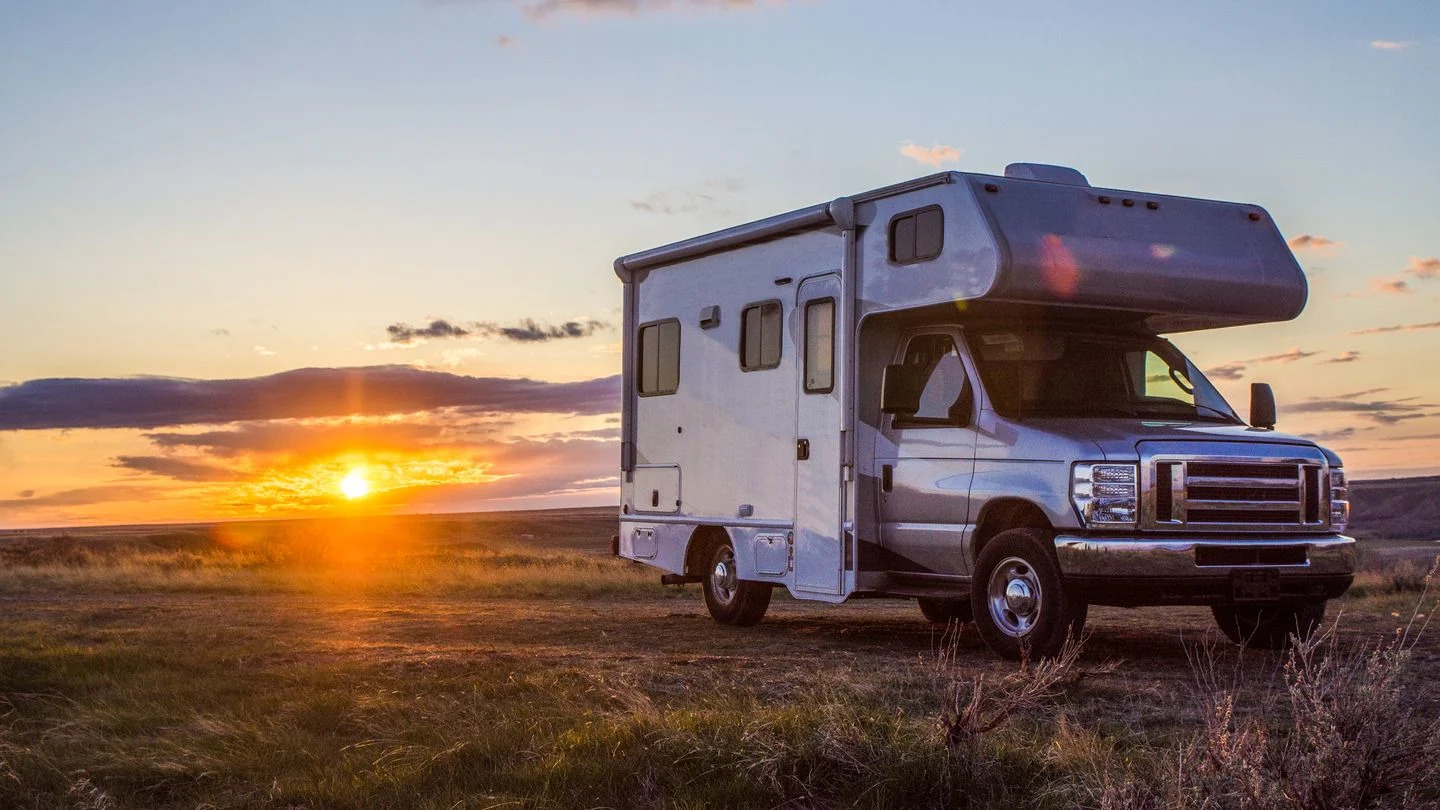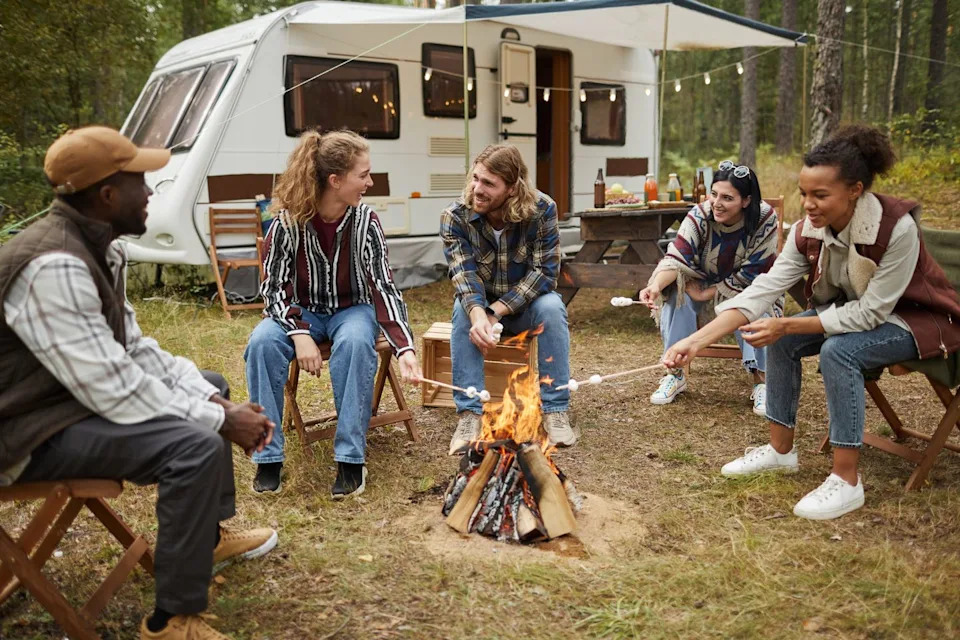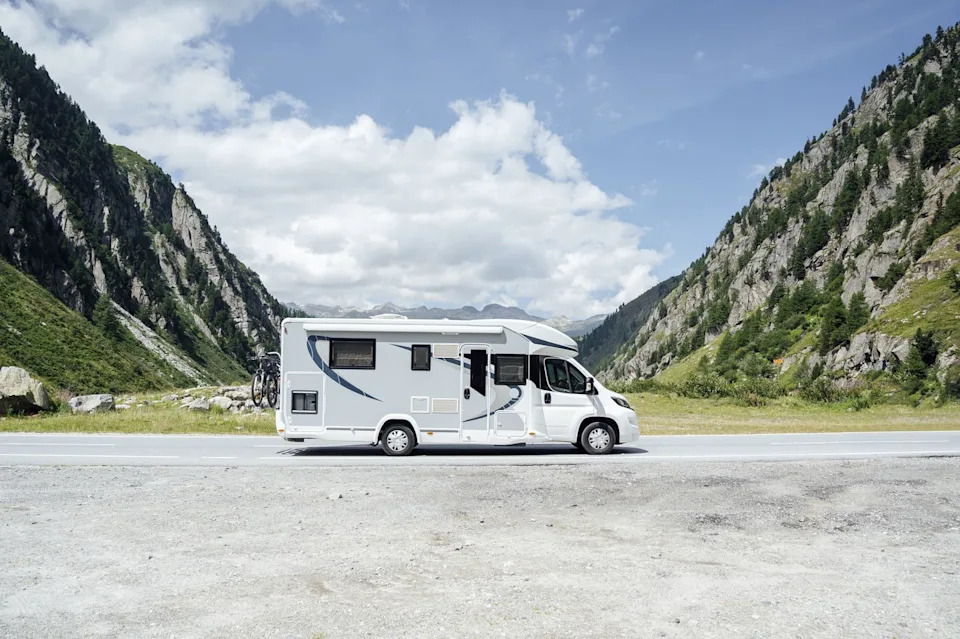
"Hearst Magazines and Yahoo may earn commission or revenue on some items through these links."
RV travel is becoming a popular alternative to traditional vacation homes, offering flexibility, mobility, and access to off-the-beaten-path destinations.
A growing number of younger travelers, remote workers, and families are embracing RV life, fueled by rising ownership, remote work opportunities, and community-building on the road.
While RVs come with costs and maintenance challenges, many find the lifestyle more affordable and liberating than owning a fixed vacation property.
Ann Couser Kittredge, a vintage home decor blogger, divides her time between two homes: her full-time residence in Vermont and her late parents’ antique-filled Colonial on the coast of Maine. But in between, she and her husband travel by RV with their Bernese mountain dog, hunting for vintage treasures and boondocking, which means camping without hookups or other amenities.
AdvertisementAdvertisement#_R_2hbckr8lb2mav5ubsddbH1_ iframe AdvertisementAdvertisement#_R_4hbckr8lb2mav5ubsddbH1_ iframeRV travel has opened up a world of lesser-known destinations for Kittredge, from quiet coves in Maine and antique barns in Vermont to quaint ferry towns in Nova Scotia. It’s also helped her build connections with people along the way, thanks to Harvest Hosts, a program that links RVers with unique overnight stays at places like lavender farms and antique shops.
“A vacation home roots you,” Kittedge says. “An RV sets you free.”
Millions of Americans—digital nomads, retirees, adventure seekers, and vacationing families hitting the road for summer break—are embracing RV travel, prioritizing the freedom it allows to explore new destinations instead of being tied to a vacation home.
Here’s a look at how RVs, which range from small pop-up campers to fully equipped luxury motorhomes, are picking up speed with new demographics and edging out the traditional vacation home.
The Rise of Younger RVers
 SeventyFour - Getty Images
SeventyFour - Getty ImagesWhile the COVID-19 pandemic and rise of remote work accelerated the trend, RV travel was gaining traction long before 2020, as the insurance company Progressive points out. In fact, RV ownership has increased by 62 percent over the past two decades, with 11.2 million U.S. households owning an RV as of 2021, according to Go RVing.
AdvertisementAdvertisement#_R_2jbckr8lb2mav5ubsddbH1_ iframe AdvertisementAdvertisement#_R_4jbckr8lb2mav5ubsddbH1_ iframeThough sales have cooled somewhat in recent years, the lifestyle remains deeply appealing to a wide range of travelers, from pet owners to remote workers.
Ari and Jessi Adler travel in their 30-foot Airstream Flying Cloud Office about nine months out of the year, exploring new destinations to ride bikes, paddle kayaks and paddleboards, and go for hikes or runs.
“Purchasing an RV meant we could have a place to work and a vacation home where the view constantly changes,” Ari says. One of the unexpected benefits has been connecting with more people from different walks of life.
“We knew we would see new places and meet people along the way as we traveled,” he says. “But we never expected to have built such a network of friends and colleagues whom we have met along the way.
AdvertisementAdvertisement#_R_2krckr8lb2mav5ubsddbH1_ iframe AdvertisementAdvertisement#_R_4krckr8lb2mav5ubsddbH1_ iframeInterestingly, the median age of RV owners has declined from 53 in 2021 to 49 in 2025, with 46 percent of owners now falling within the 35–54 age range, according to the RV Industry Association (RVIA).
The association also highlights a notable increase in first-time owners, who now comprise 36 percent of all RV owners. The RVIA’s most recent report also takes note of an increase in family travel.
Millennials and Gen Zers continue to be the fastest-growing segment for RV ownership and overall interest in RV travel, says RVshare travel expert Fiorella Yriberry. The travel company’s survey showed that 67 percent of Gen Zers and 76 percent of millennials are planning to take a road trip in an RV in 2025.
Retirees have traditionally made up the bulk of RV owners, but that’s changing, says Rob Case, managing partner of RV Overnights. The rise of remote work and access to high-speed satellite internet has attracted a younger crowd, including those priced out of the housing market, he says.
Embracing the RV Lifestyle
RVs are hitting the road more than ever. The median number of days RVs are used each year has climbed to 30, a 50 percent increase from 2021, according to the RVIA. It’s a clear sign that more people are embracing the RV lifestyle and the freedom and flexibility it offers.
AdvertisementAdvertisement#_R_2mjckr8lb2mav5ubsddbH1_ iframe AdvertisementAdvertisement#_R_4mjckr8lb2mav5ubsddbH1_ iframeIn Minnesota, where cabin ownership is a longtime tradition, Beth Blair, a Twin Cities–based travel writer, opted for something more mobile because her family likes to explore new places. They opted for an Airstream Globetrotter, which they keep about 90 minutes away at the Minnesota Airstream Park for part of the year.
“We have the advantage of picking up and going when we want to take a family trip or meet up with friends,” Blair says. “Friends can also camp at the property with us in the rental lots.”
Her family’s travel has included stays at Disney’s Fort Wilderness, South Dakota’s Badlands and Rapid City, and an annual family camp in Ohio.
Blair’s decision to go with an Airstream was also shaped by practicality: after researching size restrictions in national parks, her family opted for an RV that would give them access to more destinations without limitations.
The Pros and Cons of RV Ownership
 Miguel Angel Partido Garcia - Getty Images
Miguel Angel Partido Garcia - Getty ImagesRV ownership isn’t without its drawbacks. Initial costs can be high, ranging from tens of thousands to well into six figures, depending on the type and features, and for those financing their purchases, the interest rates are higher than a typical car loan, currently at about a 6.17 percent interest rate.
AdvertisementAdvertisement#_R_2ojckr8lb2mav5ubsddbH1_ iframe AdvertisementAdvertisement#_R_4ojckr8lb2mav5ubsddbH1_ iframeOngoing expenses like maintenance, fuel, storage, insurance, and campground fees should also be factored into budgets. RVs also require a level of upkeep and mechanical knowledge that can surprise new owners.
Maintenance expenses, in particular, are easy to overlook, but staying on top of them will save you from more expensive repair bills down the road, Yriberry points out. Annual upkeep for RV items like tires, seals, and appliances average up to $1,200 a year, she says.
While the RV lifestyle offers mobility, it also means limited space, which can be a challenge for families or longer-term trips. Parking restrictions, access to reliable internet, and seasonal weather can also influence how you use your RV.
On the plus side, RV ownership can be cost-effective over time, especially for frequent travelers. Blair points out that it’s more affordable to have an RV than a vacation home and, for her family, easier to manage.
AdvertisementAdvertisement#_R_2prckr8lb2mav5ubsddbH1_ iframe AdvertisementAdvertisement#_R_4prckr8lb2mav5ubsddbH1_ iframe“For one thing, there is no yard work to keep up or wildlife to battle—bats or squirrels in the attic, for example,” she says. “We are especially lucky to have the park as our home base, since it’s comparable to a resort.”
Other pros include having the comforts of home while being immersed in nature, and RV life for remote workers means changing up the views of your home office on a whim. Travelers who own RVs tend to love the freedom and flexibility it offers them, allowing for spontaneous trips without the logistics of booking flights and reserving hotels.
For Kittredge and her husband, seasonal flexibility is huge. In the fall and spring, they hit the road, taking quick overnight trips to Vermont’s foliage-lined backroads and Maine’s shoreline towns.
Last spring, they spent six weeks traveling through Nova Scotia and Newfoundland, visiting antique stores and photographing seaside villages for a series on their blog about antiquing road trips by RV. When the summer gets too hot, they pause their travels.
AdvertisementAdvertisement#_R_2r3ckr8lb2mav5ubsddbH1_ iframe AdvertisementAdvertisement#_R_4r3ckr8lb2mav5ubsddbH1_ iframe“The RV is our ‘third place,’” she says. “It’s the freedom to travel on a whim, bring our dog, and chase vintage treasures wherever they might be hiding.”
Follow House Beautiful on Instagram and TikTok.
You Might Also Like
15 Home Bar Gifts Every Cocktail Enthusiast Will Appreciate
32 Low Light Indoor Plants That Can Survive in the Darkest Corners of Your Home
These Are the 50 Best Paint Colors for Your Living Room














